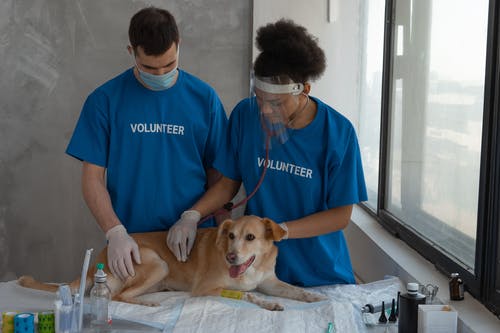
Offering sufficient care for your pet is the cornerstone of being a good pet owner. Adopting a pet is a big responsibility because you are taking on a new member of the family who needs consistent care and attention for the rest of its life.
Healthcare Treatments and Surgery for Pets
The responsibility of adopting a pet may appear daunting initially. However, the love and happiness they bring more than make up for it. Nevertheless, all responsible pet owners should give and provide the following for their pet’s wellness and health.
Preventive Dentistry
Throughout their lifetimes, canines have had constant oral care requirements. Dry food, certain toys such as “Flossie”- style bones, frequent tooth brushing, and a schedule of expert dental cleanings and oral care given by your veterinarian can offer all aid in keeping your canine’s teeth and gums healthy. Plaque, which can cause gingivitis and periodontal illness if left untreated, is less likely to form when appropriate oral hygiene is practiced. Extraction is frequently necessary in cases of advanced dental disease. Read more here for further scopes and details about oral care.
Spaying/Neutering
Except for breeding, all dogs should be altered. This minimizes the variety of unwanted puppies and secures the mother from establishing infections or cancers of the uterus or breasts. When animals are spayed or neutered, their behavior often enhances as a side effect. Spaying is done on females before their first heat cycle, typically between 6 and 12 months. Letting a female go through her birth a litter is unnecessary. The treatment is safest, and future medical benefits are most substantial if performed before the onset of the first heat or estrus. On the other hand, male pet canines are recommended to be neutered between 5 and 10 months, though this can differ by breed.
C-Sections
Puppies and kittens are surgically delivered from their mothers in a procedure known as a C-section. In situations where the animal cannot give birth, this extensive surgery is often carried out as an emergency procedure. Your vet should examine your pregnant pet frequently and thoroughly monitor her health in the weeks following the delivery or C-section—most of the time, animals undergoing a C-section recover rapidly and with few troubles. Consequently, vets are an exceptional resource for information and guidance before, during, and after C sections for dogs.
Hospice Care
One of the hardest things for pet owners is the realization that their pet is dying. The latter days of your pet’s life can bring up an extensive range of emotions, whether they are elderly or have been detected with a fatal disease. Dog hospice and end-of-life care for pets are something offered by veterinary healthcare facilities.
Medical professionals do an extensive quality-of-life assessment, administer discomfort medication and unique diet plans, and even provide humane euthanasia to ensure your pet is as pleasant and pain-free as possible in its final days or weeks.
Ultimately
Providing your canine with quality treatment is an essential part of showing them you care about them throughout their whole lives, from when they are puppies to when they are seniors. You want excellent service for your pet, and part of that is ensuring they receive the routine, everyday care they need to prosper. Remember these four pet care ideas for a lifetime of healthy and pleased cats and dogs.

 Understanding the Benefits and Risks of Artificial Insemination in Pets
Understanding the Benefits and Risks of Artificial Insemination in Pets  What Should I Look for in a Trustworthy Veterinarian?
What Should I Look for in a Trustworthy Veterinarian?  What Are the Common Eye Conditions in Pets and How Are They Treated?
What Are the Common Eye Conditions in Pets and How Are They Treated?  A Comprehensive Walkthrough of Common Veterinary Surgeries
A Comprehensive Walkthrough of Common Veterinary Surgeries  Why Regular Vet Visits and Diagnostics Keep Pets Healthy
Why Regular Vet Visits and Diagnostics Keep Pets Healthy  Spotting the Signs: When to Take Your Pet to the Hospital
Spotting the Signs: When to Take Your Pet to the Hospital  How to Choose the Right ENT Specialist for Your Needs
How to Choose the Right ENT Specialist for Your Needs